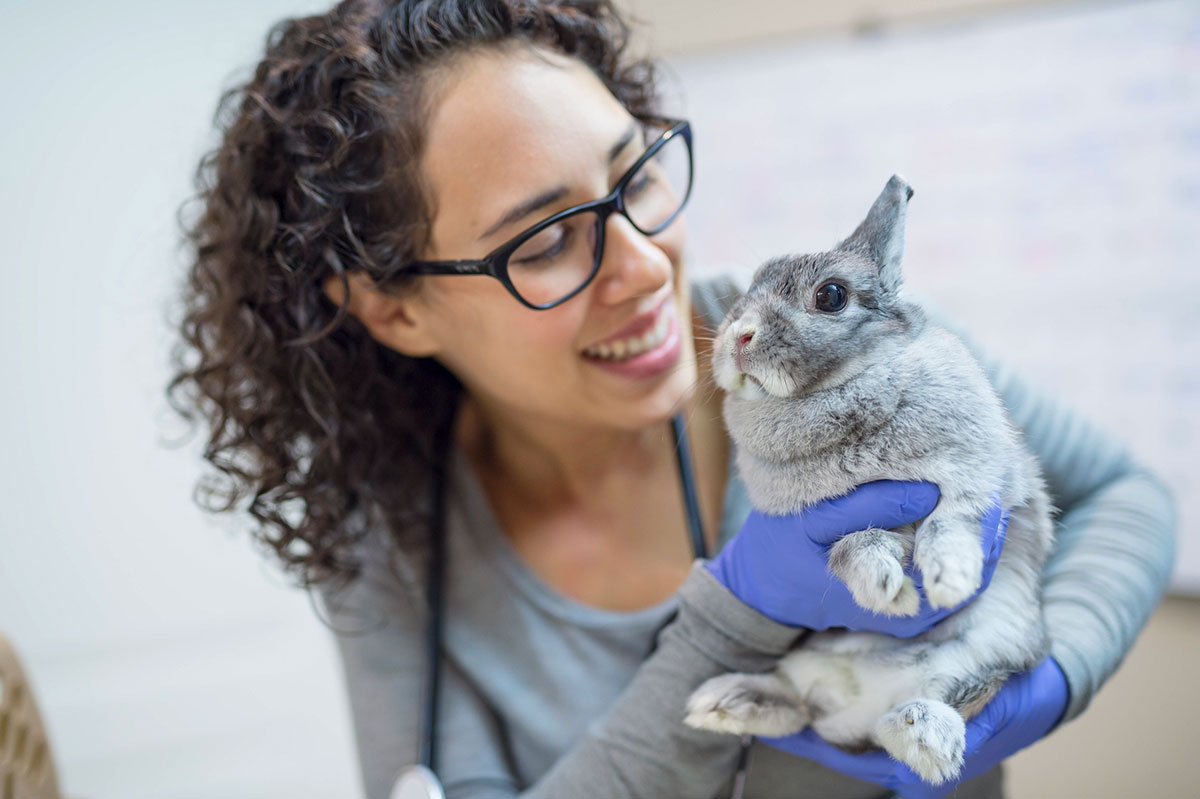How to Protect Your Rabbits from Rabbit Hemorrhagic Disease (RHDV2)

RHDV2 is a fatal disease that affects both domestic and wild rabbits and has spread across North America. It is not contagious to humans or most other species.
Currently, there are confirmed cases in domestic rabbits across the United States and in wild rabbits primarily in the West. We highly recommend you start taking extra precautions immediately to protect your rabbits against RHDV2.
RHDV2 should not be taken lightly by rabbit owners. Unfortunately, most cases do not have any warning signs and result in death. However, there are ways to protect your rabbit from RHDV2 that we will cover in this article.
Fast Facts About RHDV2
RHDV2 was first identified in France in 2010.
It affects wild and domesticated rabbits, including hares, jackrabbits, cottontails, and possibly pika.
RHDV2 is a strain of Rabbit Hemorrhagic Disease, and it appears to have evolved from a pre-existing avirulent rabbit calicivirus.
The first reported case in North America was in 2016 at a farm in Quebec, Canada.
Officials have confirmed cases in every state. Up to date case information can be found on Wildlife Health.
There is now an approved vaccine available in the United States.
Symptoms of RHDV2
Sadly, most of the time there are no warning signs of illness. In most cases, the infected rabbits were eating and acting normally before they died suddenly from RHDV2. In cases where there were signs, a bloody nose or mouth were the most common symptom.
Symptoms may include:
- Loss of appetite
- Lethargy
- High fever
- Seizures
- Jaundice
- Bleeding from nose, mouth, or rectum
- Difficulty breathing
- Sudden death
What Rabbit Owners Can Do to Prevent the Spread of RHDV2
Limit Your Rabbits’ Exposure to Prevent Possible Infection
The two best ways to prevent RHDV affecting your rabbits are to vaccinate your rabbits against RHDV and practice strict “biosecurity” measures. The biggest biosecurity risk comes from other rabbits, and avoiding contact with new rabbits and hares is one of the best ways to keep your pets safe.
- Do not allow your domestic rabbit to have contact with wild rabbits.
- Do not introduce new rabbits from unknown or untrusted sources.
- If you must introduce new rabbits to your home or facility, keep them quarantined in a separate room and cages from the other rabbits for 30 days.
The RHDV2 vaccine is available on a state-by-state basis with 45 state veterinarians, plus Washington DC. Vaccination is recommended for healthy rabbits over 10 weeks of age. The vaccine is safe for pregnant does, but babies will still require their own dose when they are of age. The vaccine will take a minimum of 7 days to provide protection. Only pet rabbits can be vaccinated and these rabbits cannot be released into the wild.
Handle Your Rabbits with Extra Care
Because there isn’t a widely available vaccine yet, you may need to adopt new habits when handling your rabbits. Veterinarians and those who work in animal care may already observe these precautions, but your average rabbit owner may not.
It's possible to bring RHDV2 inside through your shoes and clothing. When you go to play, feed, or otherwise interact with your rabbit:
- Wash your hands.
- Change out of clothing that you’ve worn outside.
- Enjoy time with your pet.
- Take off the clothing you wore while playing with your rabbit before going outside or interacting with other animals.
- Wash your hands after taking off the clothes.
If you have children, you can make these new precautions a game. Choose a Rabbit Outfit that is only worn while they play with the rabbits. If you approach it with a little bit of whimsy, it won’t be as scary for your kids. Plus, teaching your kids to wash their hands before and after handling animals is a good habit.
Choose a Rabbit Outfit that is only worn while they play with the rabbits. If you approach it with a little bit of whimsy, it won’t be as scary for your kids.
Though it is possible to bring the virus in via hay, vegetables, and other items, many sources considered it unlikely. Hay is harvested a year in advance, which makes it unlikely that the fomites of the virus would survive long enough to infect new rabbits. However, many hay manufacturers are taking extra precautions to prevent the accidental spread of disease.
Cleaning Precautions to Take for RHDV2
RHDV2 is a nonenveloped virus, which makes it more durable than other viruses. Based on the characteristics of RHDV, it is thought that RHDV2 can survive freezing temperatures and last in temperatures of 120° F (50° C) for up to an hour.
Due to its durability, not all disinfectants are effective against RHDV2. To make sure your disinfectant is effective, check the EPA's List O: Disinfectants for Use Against Rabbit Hemorrhagic Disease Virus (RHDV2) to make sure your disinfectant is effective against it. EfferSan, (EPA Reg. # 66570-2) meets the requirements and is on List O.
Instructions for Using EfferSan to Protect Against RHDV2
Note that EfferSan is effective against RHDV2 on hard, non-porous surfaces.
- Apply EfferSan liberally, paying special attention to nooks and crannies that are less visible.
- After applying EfferSan, wait 5 minutes before wiping or rinsing (contact time).
- Always rinse EfferSan when using at disinfectant strength.
General Best Practices When Cleaning:
- If cages are heavily soiled with food, feces, or dirt, remove as much as possible before using a disinfectant.
- Whatever disinfectant you use, follow the instructions for the disinfectant to ensure that you use it safely and effectively.
- It is better to spray disinfectant directly onto the surface you want to disinfect, rather than to spray it onto a cleaning cloth or use it for mop water. When you mop, you dip the cleaning tool into the disinfectant. Each time you do this, new dirt, germs, and other contaminants inactivate the disinfectant.
- Avoid moving rabbit housing in and out. If you do need to remove a cage, disinfect it before and after it arrives at its destination.
